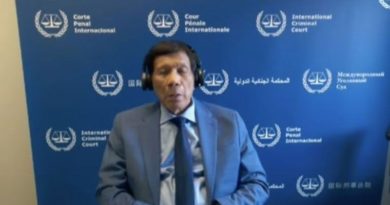OPINION-ECONOMY: MALAYSIA – Mythbusting in Malaysia By Professor Dr. Hoo Ke Ping Economic Analyst -Malaysia
According to the World Bank’s September 2017 report on Malaysia, less than 1 percent of Malaysian households are currently living under extreme poverty. Further reports suggest that the government’s focus is currently shifting towards addressing the well-being of the poorest bottom 40 percent of the population.
A common misconception is that income inequality in Malaysia remains high relative to other East Asian countries, but studies conducted from 2009 to 2014 by the Khazanah Research Institute have shown that the average income for a bottom 40 household has seen a growth of 11.9 percent annually, higher in contrast to the 7.9 percent growth for the rest of the Malaysian population. Indicating that the low-income families in Malaysia are quickly earning more each year.
The World Bank acknowledges the strategy of the government gradually moving towards more targeted measures to support the impoverished, following the removal of broad-based subsidies.
Other targeted measures include the 1Malaysia initiative, which granted free basic medical services, Internet centers for the urban poor, and subsidies at specific provision stores. In addition, the government also reduced toll rates; subsidized rice, flour, sugar and approved a schooling aid of 100 ringgit ($25) per pupil as well as a book voucher scheme of 250 ringgit per person for pre-university students and undergraduates, among others.
Mr. Najib and his government have prioritized human resource development and encouraged the poor to acquire the necessary skills and qualifications. Steadily gaining employment in the expanding modern, high wage sectors of the economy leading large number of workers shifting out of the traditionally low paid rural occupations into better paying modern sector employment.
According to the Department of Statistics Malaysia, the number of persons engaged in professional services in 2015 compared to 2010 showed an annual growth rate of 13.8 percent per year.
The total salaries and wages paid in 2015 were 10.1 billion ringgit compared to 4.4 billion ringgit in 2010 with annual growth rate of 17.8 percent annually.
More importantly, all these measures and statistics indicate a continued strategy that minimizes the transfer of poverty to the next generation. Quality of life has also been improved through the upgrading or expansion of public services, social amenities and physical infrastructure, with easy accessibility at its core.
Professor Dr. Hoo Ke Ping is an Economic Analyst based in Malaysia.
Jakarta Globe / By : Prof. Dr. Hoo Ke Ping | on 9:38 AM April 09, 2018 / All photographs, news, editorials, opinions, information, data, others have been taken from the Internet ..aseanews.net | [email protected] | For comments, Email to : Pahulu Gan – Contributor | [email protected]











